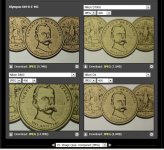Hello,
I'm new here and this is my first post.
I'm new to using my newly aquired skywatcher ed80 ds pro for bird shooting.
I've been out shooting small birds with it and even after cropping the image, the bird in the shot still looks smallish? I've looked at Fernando Batista's bird shots, and the birds fill the photo much more. Am I missing something?
Do I need a longer extension tube or teleconverter?
I set my in-cameras manual lens setting to 600mm and nearest at f8.
I shoot at shutter speed priority at over 1/6000th (no mirror lock up) and in Continuous mode via remote shutter.
I've tried mirror lock up, Q mode (quiet mode) too.
after 200 shots on a typical shoot, alot of them are blurred, many because of in continuous mode, although some blurred shots looked in focus via the view finder at the time? Only about 30 shots where very sharp and in focus.
So, am I doing something incorrect or missing something?
Here is my equipment list:
Nikon D3s (full frame size sensor)
Large Manfrotto tripod with heavy sturdy video head.
Skywatcher Ed 80 ds
Max dslr Nikon 2" adapter
2" 50cm extension tube
Remote shutter release unit
Sorry for the long post and thank you in advance.
Jeff
I'm new here and this is my first post.
I'm new to using my newly aquired skywatcher ed80 ds pro for bird shooting.
I've been out shooting small birds with it and even after cropping the image, the bird in the shot still looks smallish? I've looked at Fernando Batista's bird shots, and the birds fill the photo much more. Am I missing something?
Do I need a longer extension tube or teleconverter?
I set my in-cameras manual lens setting to 600mm and nearest at f8.
I shoot at shutter speed priority at over 1/6000th (no mirror lock up) and in Continuous mode via remote shutter.
I've tried mirror lock up, Q mode (quiet mode) too.
after 200 shots on a typical shoot, alot of them are blurred, many because of in continuous mode, although some blurred shots looked in focus via the view finder at the time? Only about 30 shots where very sharp and in focus.
So, am I doing something incorrect or missing something?
Here is my equipment list:
Nikon D3s (full frame size sensor)
Large Manfrotto tripod with heavy sturdy video head.
Skywatcher Ed 80 ds
Max dslr Nikon 2" adapter
2" 50cm extension tube
Remote shutter release unit
Sorry for the long post and thank you in advance.
Jeff






